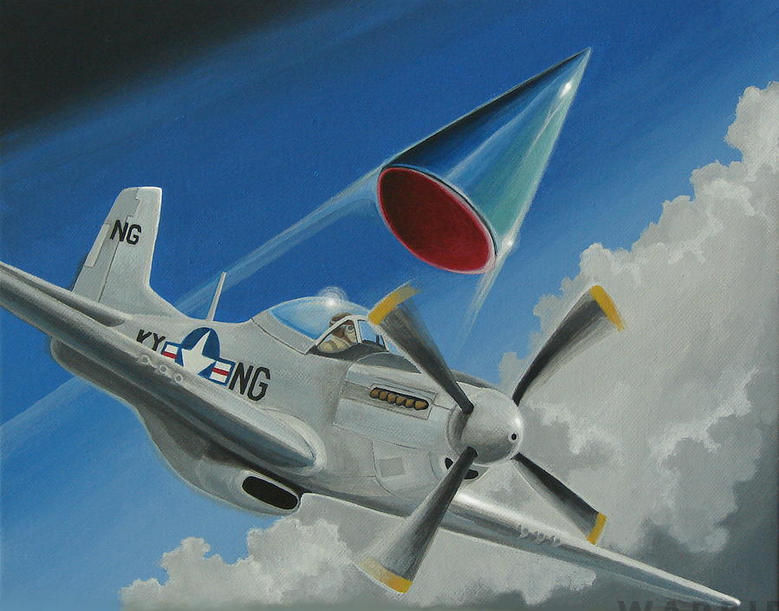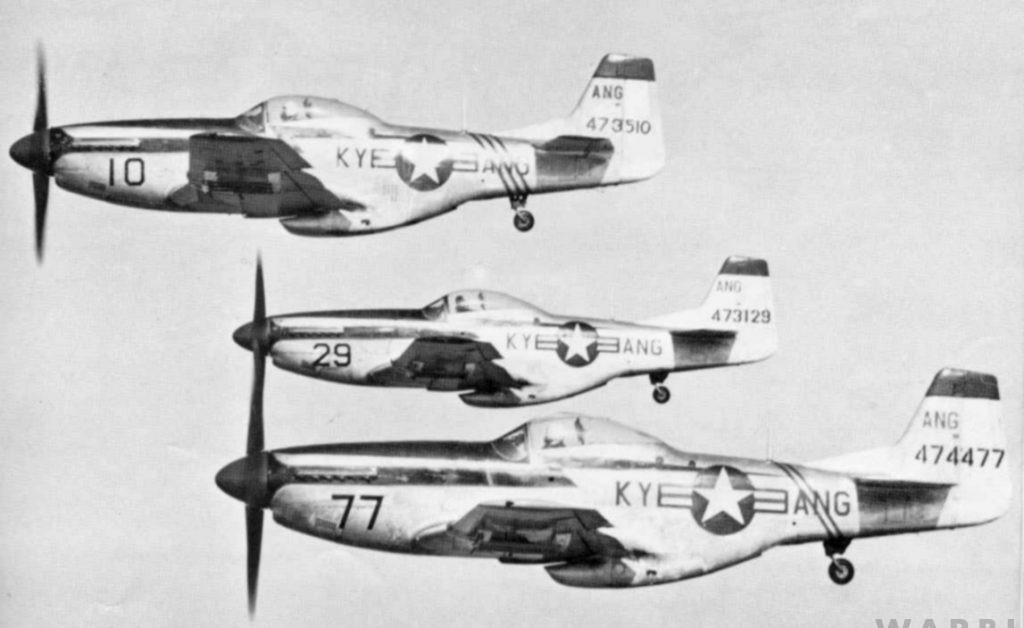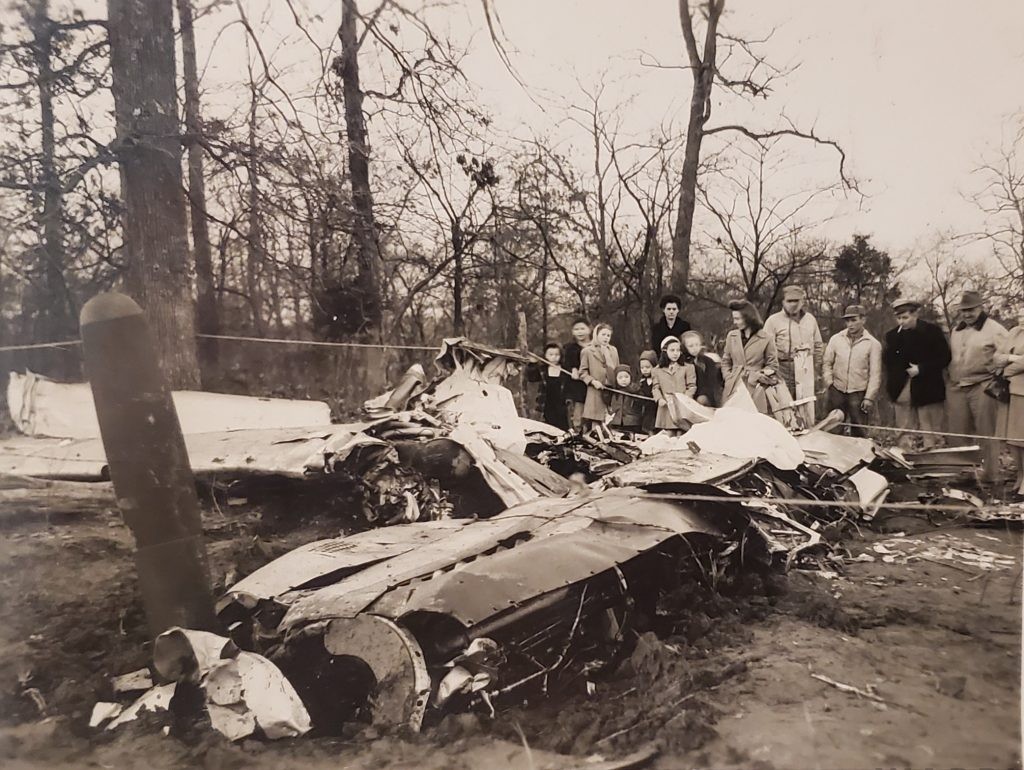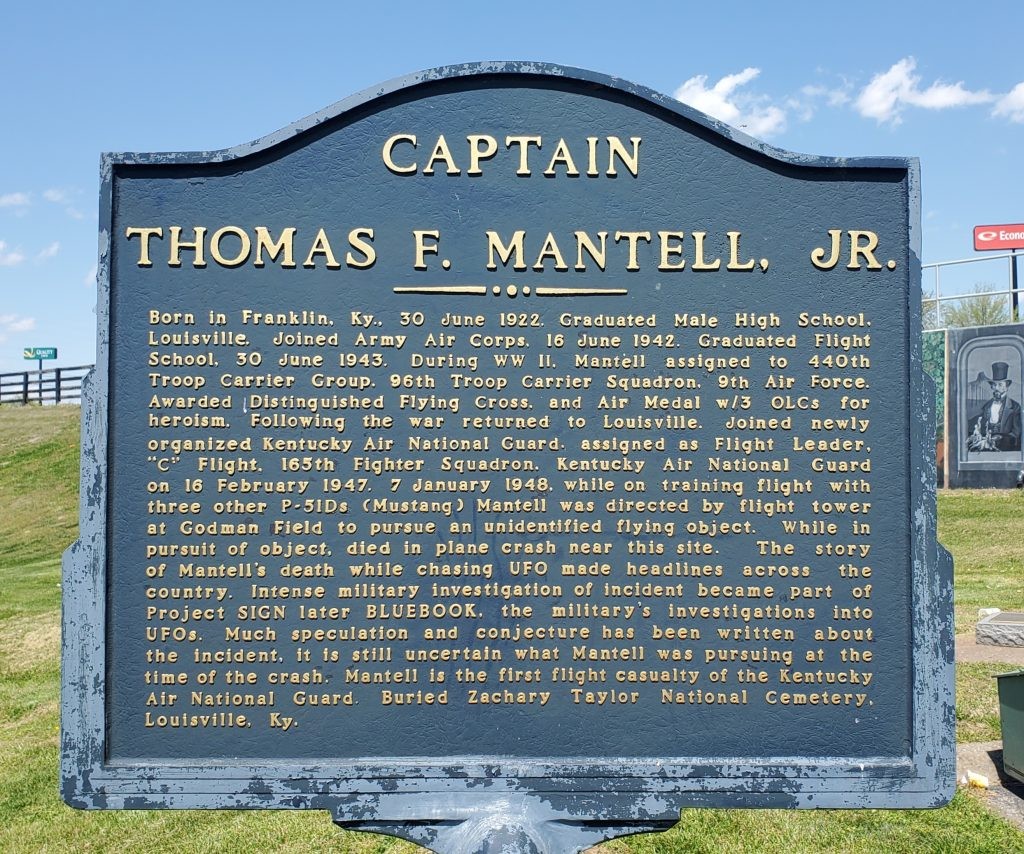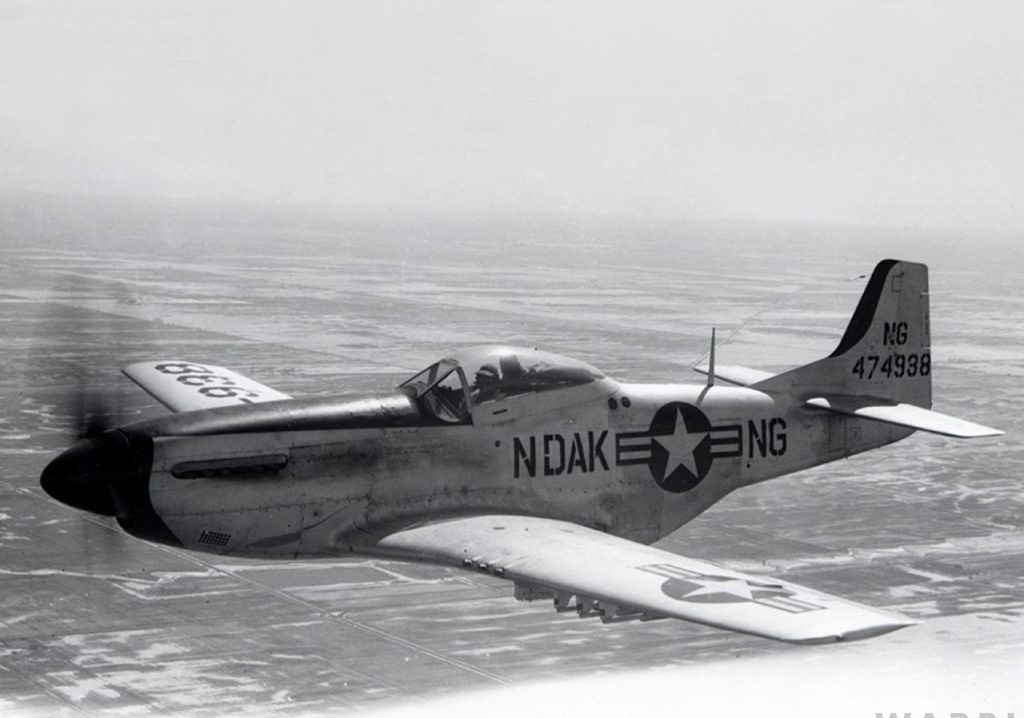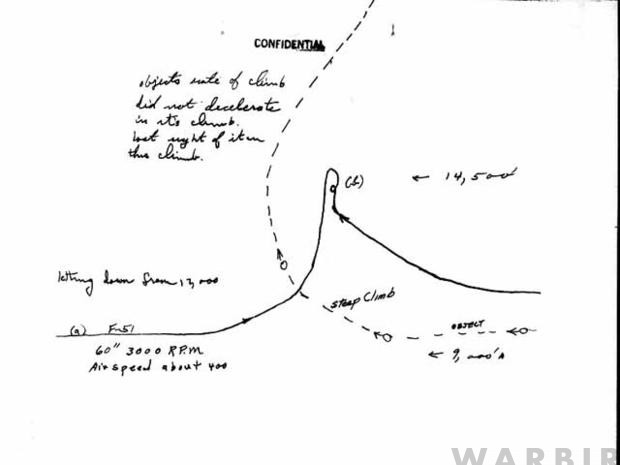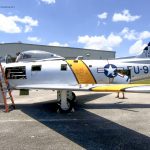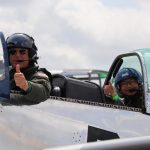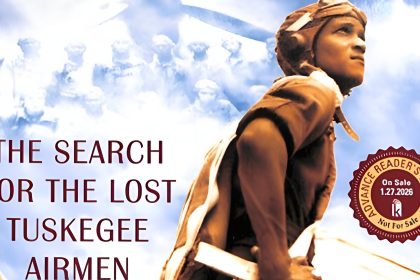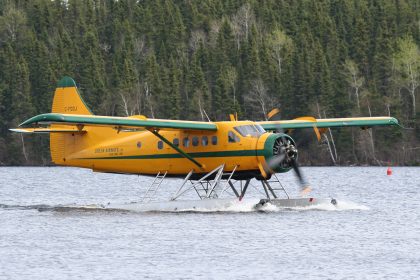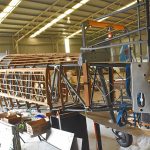by Stephen Chapis
In the early months of modern Ufology, a pair of Air National Guard F-51 Mustangs engaged UFOs (Unidentified Flying Objects) in two separate incidents that became known as “The Mantell Incident” and “The Gorman Dogfight”. Tragically, one of these turned deadly.
In recent years there have been a number of high-profile videos released which show U.S. Navy F/A-18 Super Hornet crews encountering UFOs over the Atlantic and Pacific Oceans between 2004 and 2015. Crews reported that the objects had no visible exhaust trials and reached hypersonic speeds at over 30,000ft. During training exercises off the U.S. east coast in 2014 and ’15, fighter crews flying from USS Theodore Roosevelt stated that encounters with UFOs were an almost daily occurrence. In one incident, a Super Hornet crew nearly collided with one of these objects.
For decades, if commercial or military pilots reported a UFO, a negative stigma tended to follow them for the remainder of their careers. Today, with the proliferation of UAVs from terrorist groups and states, investigating UFOs that could pose a threat to national security, the U.S. government is taking these sightings seriously. In August 2020, Deputy Secretary of Defense David Norquist approved the establishment of an Unidentified Aerial Phenomena (UAP) Task Force (UPATF).
The establishment of the UAPTF is history repeating itself because, while there are drawings of alien-like figures and cylindrical-shaped flying objects in China that possibly date back to 45,000 BC, shortly after pilot Kenneth Arnold spotted nine UFOs flying near Mount Rainier on June 24th, 1947, the government established Project SIGN, to “…collect, collate, evaluate, and disseminate all information concerning UFO sightings and phenomena.”
Since discussions about UFOs can quickly descend into talk of government conspiracies and cover-ups, what follows is a brief history of the known facts regarding the pair of Air National Guard (ANG) F-51 pilots which encountered UFOs in 1948 – and nothing else. You may draw your own conclusions from these details.
JANUARY 7th, 1948: THE MANTELL INCIDENT
In May 1946, the Army Air Forces redesigned the WWII-era 359th Fighter Group (FG)/368th Fighter Squadron (FS) as the 123rd FG/165th FS respectively. Just a year later, twenty-five P-51Ds arrived at Standiford Field, the new home of the Kentucky Air National Guard. Captain Thomas F. Mantell, Jr., a 26-year-old native of Franklin, Kentucky, was one of the pilots newly-assigned to the 123rd. He was a D-Day veteran C-47 pilot who had earned numerous medals during his service, including the Distinguished Flying Cross and the Air Medal (with three Oak Leaf Clusters). Mantell checked in at the 123rd on February 16th, 1947 but just eleven months later, he would become famous under tragic circumstances.
On January 7th, 1948, a flight of four F-51s from the KY ANG’s 165th Fighter Squadron, led by Capt. Mantell in F-51 44-63869, took off from Marietta, Georgia bound for Standiford. 1st Lts Robert K. Hendricks and Albert W. Clements, and 2nd Lt B.A. Hammond were also in this flight. While they were en route, the Kentucky State Highway Patrol began receiving phone calls from local citizens about a strange object over Maysville, Kentucky, some 80 miles east of Godman Field. The Highway Patrol notified Military Police at Fort Knox in Louisville who, in turn, called the tower at Godman Field. Technical Sergeant (TSgt) Quinton Blackwell took the call at 1320hrs. Blackwell called Flight Service at Wright Field in Dayton, Ohio asking if there were any aircraft in the vicinity of Godman. There were none. As Blackwell hung up the phone he received another phone call, the object had now been sighted in Owensboro and Irvington. These witnesses stated the object appeared to be 250-300 feet in diameter.
At that time, Mantell’s flight was passing over Godman and TSgt Blackwell called Capt. Mantell, “We have an object out south of Godman here that we are unable to identify, and we would like to know if you have gas enough; and if so could you take a look for us if you will.” Mantell replied, “Roger, I have the gas and will take a look for you if you give me the correct heading and any information you have on locating the object.” At that point, 1st Lt Hendricks requested and received permission to leave the flight and return to Standiford alone, presumably due to low fuel. The remaining three Mustangs made a climbing right turn to a heading of 210 degrees. When Mantell passed through 14,000ft, he rolled wings level but continued to climb. As they passed through 20,000ft, Mantell apparently located the object at 12 o’clock high and pointed it out to Lts Clements and Hammond and radioed Godman, “I have the object in sight above and ahead of me, and it appears to be moving at about half my speed or approximately 180 miles per hour.” When asked to describe the object, Mantell replied, “It appears to be a metallic object or possibly reflection of sun from a metallic object and is of tremendous size.”
Shortly thereafter, at 22,500ft, 2nd Lt Hammond signaled he was having trouble with his oxygen, so he and 1st Lt Clements broke off and descended to a lower altitude. As they descended, Lt Clements heard a broken transmission that he would remain at 25,000ft for ten minutes. A few minutes later, Mantell radioed, “The object is directly ahead of me and slightly above, and is now moving at about my speed or better. I am trying to close in for a better look.”
That was Mantell’s last transmission…
On the ground, Franklin resident William A. Hayes, saw Mantell’s Mustang enter a slow left-hand spiral, which morphed into a shrieking power dive that caused the F-51 to disintegrate somewhere between 20,000 and 10,000ft. While a majority of the aircraft crashed just 150 yards from a home occupied by Carrie A. Phillips, people found parts of the fighter more than a half mile away. Capt. Mantell’s body was in the main section of wreckage, still strapped to his seat; his watch stopped at 3:15pm. The investigation concluded that a lack of oxygen had rendered Capt. Mantell unconscious at approximately 25,000ft, but that his Mustang had continued to climb until it reached 30,000ft, after which it fell into the final, spiral dive towards the ground. Given that his canopy was still locked, Air Force officials determined that Mantell never regained consciousness before his Mustang broke up.
A few days after the accident, Capt. Thomas Mantell was laid to rest in Zachary Taylor National Cemetery in Louisville, Kentucky. The crash of National Guard Eight Six Niner and the death of a decorated war hero could have been lost to history had Mantell not been chasing a UFO. But because of this detail, the accident became part of Project SIGN which, as many will recall, later came to be known as Project BLUE BOOK.
On September 29th, 2001, the Mantell family were in attendance when the Simpson County Historical Society unveiled the county’s first historic marker, which is located nearby the county’s tourism office at I-65’s exit two and close to the site where Capt. Mantell’s Mustang crashed.
OCTOBER 1, 1948: THE GORMAN DOGFIGHT
While “The Mantell Incident” was well-known to historians outside ufology circles, the incident which came to be known as the “Gorman Dogfight”, might have lived in eternal obscurity had it not been for the History Channel’s historic television drama, Project Blue Book. The premiere episode, The Fuller Dogfight, highlighted a dogfight between a P-51 Mustang flown by Henry Fuller and a UFO in the darkened skies over Fargo, North Dakota. Although the episode took some very X-Files-like turns, with government cover-ups and midnight kidnappings, this incident was based on an actual 27-minute dogfight between 1st Lt George F. Gorman of the North Dakota ANG on October 1, 1948.
On that night, Gorman’s squadron had just returned from a cross-country flight, but Gorman decided to log some night-flying, and briefly circled the local football stadium. As he turned towards the airfield to land, the tower advised him about what appeared to be the taillight of another aircraft. The only other aircraft Gorman saw was a Piper Cub, but the identity of the other light was a mystery. Gorman informed the tower that he was going to investigate the light and began climbing towards it.
He closed to within about a thousand yards of the light, which he said appeared to be roughly six to eight inches in diameter and blinking. As Gorman drew closer, the light became far brighter, broke left and accelerated away. Despite giving chase with sixty inches of manifold pressure, Gorman could not catch the light. When the light started a climbing left turn, Gorman attempted to cut the corner, but the light then broke sharp right and went head-to-head with Gorman’s Mustang, so the pilot dove away to avoid what looked like being an imminent mid-air collision.
When Gorman looked over his shoulder, he saw the light making another left turn, arcing around for another head-on pass, but instead of Gorman having to break away this time, the light shot straight up and disappeared. Gorman climbed in pursuit, but stalled at 14,000ft and never saw the object again. The dogfight, which lasted an amazing twenty-seven minutes, was witnessed by tower operators Lloyd Jenson and H.E. Johnson, and the pilot of the Cub, Dr. A.E. Cannon and his passenger, Einar Nielson.
In Gorman’s statement to an Air Force Intelligence Officer, he said the object emitted no sound, odor, or exhaust trail, and despite pushing his Mustang to over 400-mph, the object not only outran him, but also out-maneuvered him. In a debrief with 178th FS commander, Maj. D.C. Jones, Gorman stated that there seemed to be “thought” behind the maneuvers, and that he blacked out temporarily whenever he tried to turn with the object. Gorman, a WWII veteran, remained in excellent physical condition; he did not believe that any human could have withstood the G-forces which the object seemed to incur.
As mentioned earlier, at the time of these encounters, Project SIGN had already been established.
On December 16, 1948, just three months after Gorman engaged the mysterious light over Fargo, Project GRUDGE was established to continue the work of SIGN. In August 1949, they reported, “…these flying objects constitute no threat to the security of the United States” and that the sightings “were misinterpretations of conventional objects” and the result of “mass hysteria”.
Project SIGN investigators concluded that the object Capt. Mantell chased was either the planet Venus or a U.S. Navy Skyhook weather balloon. After GRUDGE became Project BLUE BOOK in March 1952, Capt. Edward J. Ruppelt, a decorated WWII-veeran bombardier, and Ohio State University astronomer, Dr. J. Allen Hynek, re-investigated the Mantell Incident. While rejecting the Venus conclusion, they did think the weather balloon theory was plausible. Furthermore, when officers involved with Project Sign investigated the Lt Gorman incident, they came to the same conclusions, that Gorman had chased a lighted weather balloon. A re-evaluation of the case under BLUE BOOK repeated the same platitude.
While WarbirdsNews/Warbird Digest has no official position on either of these mysterious cases, we are left with a genuine sense of wonder. What so captivated Capt. Mantell that he climbed to altitudes that he knew would incapacitate and ultimately kill him? In the Gorman incident, what type of flying object seemingly defied physics and outmaneuvered a pilot flying the best pursuit fighter of the Second World War? The truth, is out there… somewhere.







